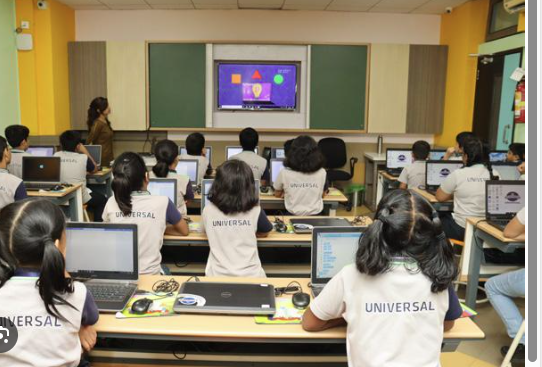Finding credible sources is one of the most important parts of writing a strong school paper. Whether you’re working on a research essay, science report, or persuasive project, reliable sources support your arguments and show that you’ve done your homework. With so much information online, it’s important to know how to evaluate sources for accuracy, authority, and relevance. Here’s how to find and identify credible sources for school assignments.
1. Start with Academic Databases and Library Resources
Use your school or public library’s digital database to access peer-reviewed journals, books, and academic articles. Databases like JSTOR, EBSCOhost, and Gale are trusted by educators and filled with scholarly materials that meet academic standards. Libraries also often provide citation tools and research guides to help students use these sources effectively.
2. Use Google Scholar
Google Scholar is a free search tool that helps students find scholarly articles, theses, books, and court opinions. It shows how many times a paper has been cited and links to related research. It’s a reliable way to access academic sources that go beyond regular web content. For students who need deeper research, using the “cited by” feature helps uncover the most influential papers in a topic area.
3. Evaluate the Author’s Credentials
Check who wrote the source and their qualifications. Experts in their field often have degrees, research experience, or work for reputable institutions. Avoid sources written by anonymous authors or individuals without relevant credentials. Looking up the author’s background online or in academic directories can also verify their credibility.
4. Check the Publication Date
Make sure the information is up to date, especially for science, technology, or current event topics. Older sources may not reflect the latest research or developments. Use the publication date to decide whether a source is still relevant. If using historical data, ensure it’s clearly labeled and used in the appropriate context.
5. Look for Peer-Reviewed or Scholarly Sources
Peer-reviewed articles are reviewed by other experts before being published. These sources are more trustworthy because they go through a quality-check process. You can find peer-reviewed work in academic journals and databases. Always check journal websites or search engines to confirm a publication’s peer-review status.
6. Avoid Unverified Websites
Be cautious with personal blogs, wikis, and opinion-based sites. Unless the site is backed by a reputable organization, it may not be reliable for academic use. Double-check any claims with more established sources. While blogs can offer insight or unique perspectives, they should not serve as your primary source of evidence.
7. Use Websites with .edu, .gov, or .org Domains
Websites from educational institutions (.edu), government agencies (.gov), and nonprofit organizations (.org) are generally more trustworthy. These sources are often researched, reviewed, and updated by professionals. However, it’s still important to evaluate content individually—even trusted domains can contain outdated or biased information.
8. Check for Citations and Sources
A credible source usually references other sources. If the article or site includes a bibliography or footnotes, that’s a good sign it’s based on research. The presence of clear citations adds transparency and reliability. Well-sourced articles allow readers to trace information back to the original studies or publications.
9. Compare Multiple Sources
Don’t rely on just one source. Compare information across multiple credible websites or articles. If several reputable sources agree on the same facts, you can feel more confident that the information is accurate. Reading from a range of perspectives also helps students better understand the topic and avoid one-sided arguments.
10. Ask a Teacher or Librarian for Help
When in doubt, ask a teacher, school librarian, or media specialist for guidance. They can help you find approved databases, recommend sources, and teach you how to verify information. They may also offer instruction in research strategies and access to tools like citation managers or database tutorials.
11. Use Reference Tools and Citation Builders
Tools like EasyBib, ZoteroBib, and Citation Machine not only help create proper citations but often provide additional source evaluation tips. These platforms can teach students how to distinguish between primary and secondary sources, identify peer-reviewed articles, and format references accurately.
12. Pay Attention to the Purpose and Bias of the Source
Identify why the source was created. Is it intended to inform, persuade, entertain, or sell something? Sources with a clear agenda may include bias or exclude key information. Evaluating the objectivity of a source helps ensure that your research is balanced and fair.
13. Review the Writing Quality and Tone
Credible sources are typically well-written and professionally edited. If a source contains many spelling errors, exaggerated claims, or informal language, it may not be appropriate for academic use. A clear, academic tone is a good indicator of a reliable publication.
14. Use Subject-Specific Resources When Possible
Different subjects have different standards for credible sources. For example, students writing about science may rely on databases like PubMed, while those writing about education may use ERIC. Exploring subject-specific databases ensures you’re using sources respected in that field.
In conclusion, finding credible sources means knowing where to look and how to judge what you find. By using academic databases, evaluating the author and publication, and cross-checking your information, you can build a strong foundation for any school paper. Credible research strengthens your writing, earns trust from your readers, and helps you succeed academically. With the right strategies, finding trustworthy information becomes a skill you can carry throughout your education and beyond.














